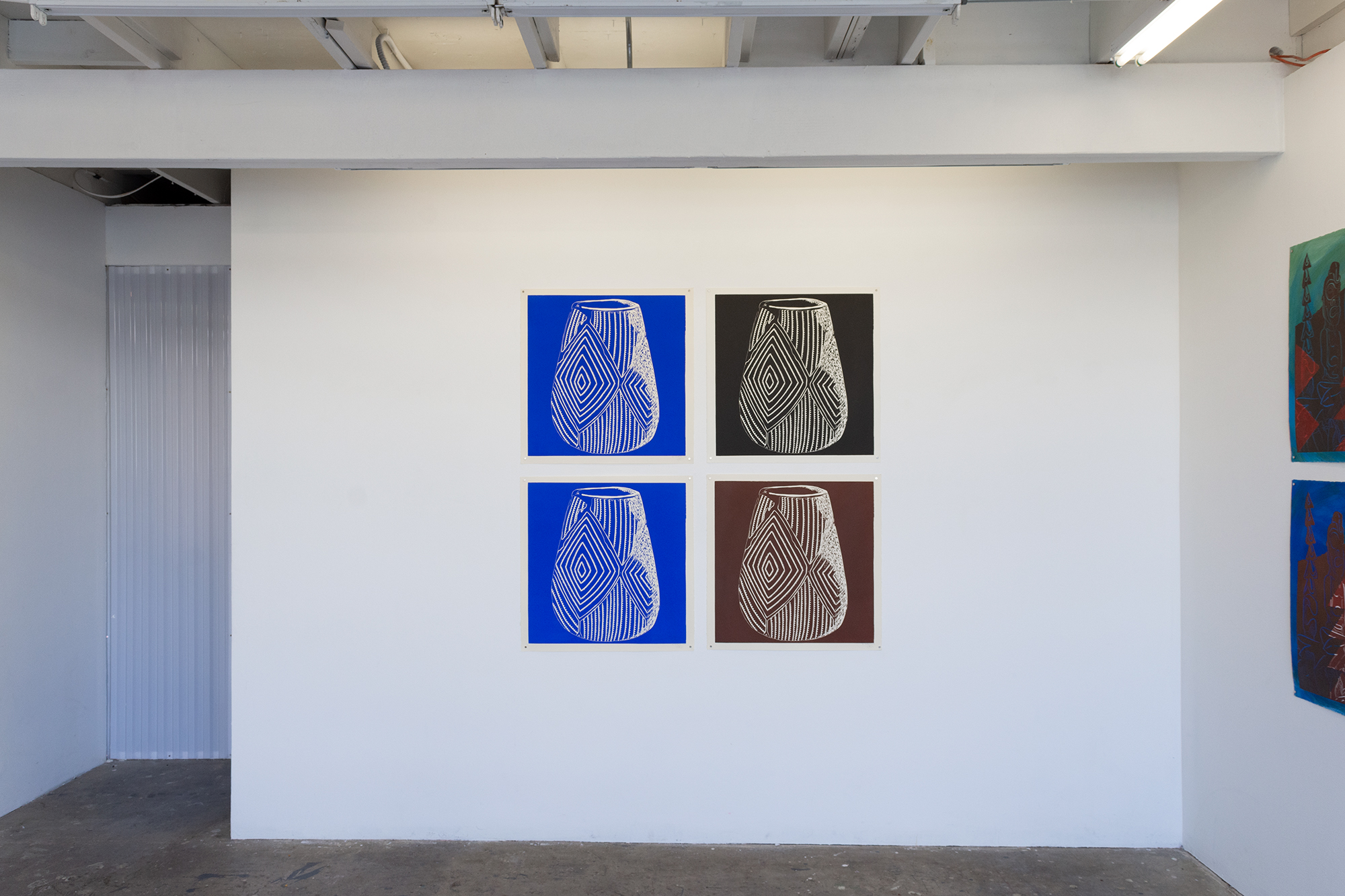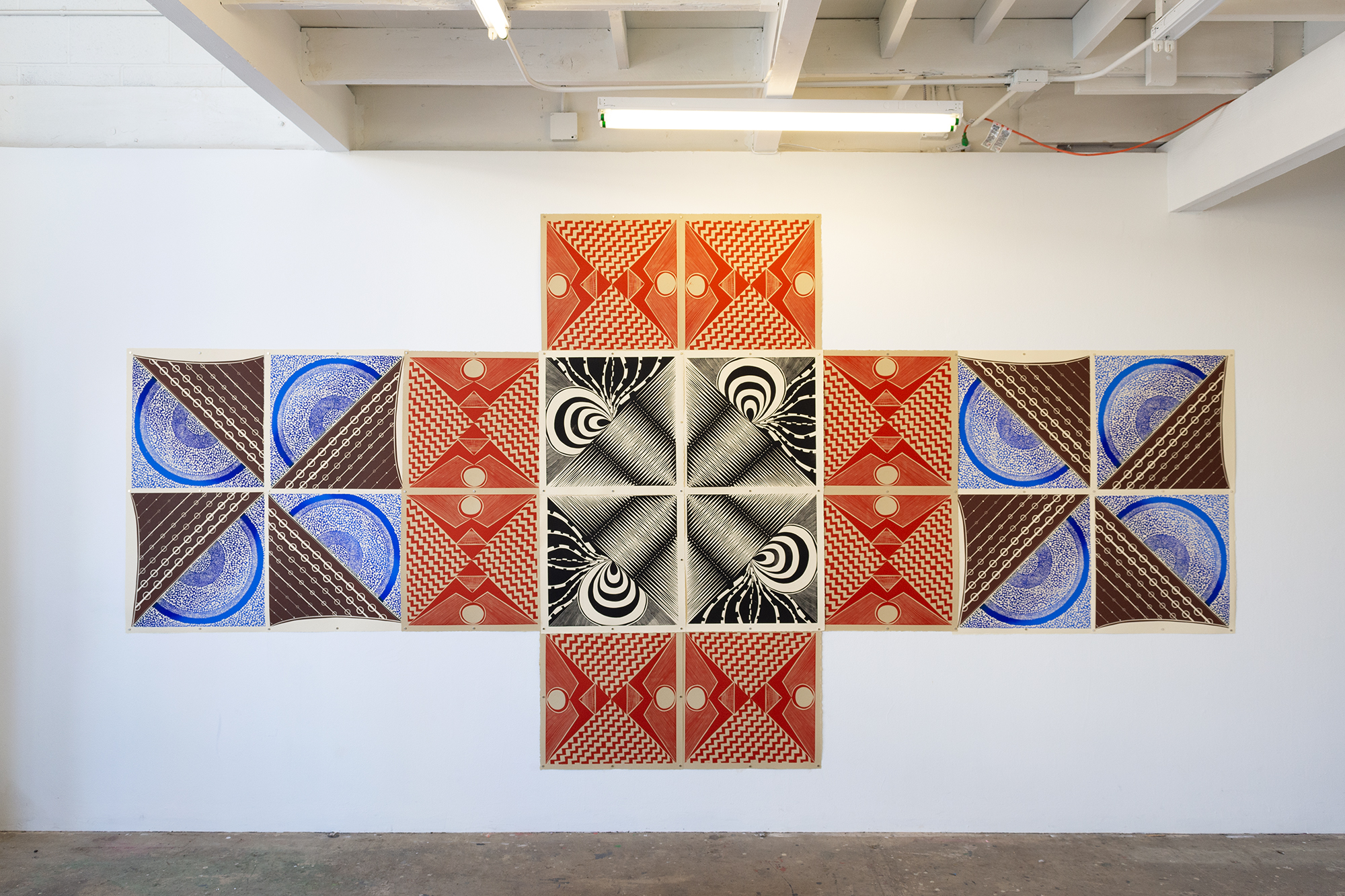He Noho Pili Kua
He Noho Pili Alo
J.D. Nālamakūikapō Ahsing and Auliʻi Mitchell
October 11 – November 12, 2020
J.D. Nālamakūikapō Ahsing and Auliʻi Mitchell
October 11 – November 12, 2020

He Noho Pili Kua, He Noho Pili Alo honors Kanaka Maoli ways of being, knowing, and living. Visually, this phrase calls to mind two people; one to the back and one to the front. We imagine a child in the embrace of a kūpuna, kumu and haumāna, or one holding a kiʻi akua in the arms. We call forward the phrase, “e aʻo pū kāua.” Let’s learn and teach together.
In King David Kalākaua’s song, Kaniakapupu, the line “ua noho au a kupa i ke alo” reflects three main values: respect, reciprocity, and relationality. Noho expresses an enduring commitment to respect and humility when building relationships across people, places, and practices. Only through commitments of time and energy do we become pili. Close. Clinging. United. Connected. These pilina, or relationships, exist in an active state. Much like Ea, they are dynamic and must be maintained breath to breath, day to day, and generation to generation. When maintained, these pilina may blossom with ʻike and inspiration. Kua and Alo may be understood as complementary oppositions. Together, they embody continuity. Alo refers to one’s front, face, or presence. As in iwikuamoʻo, kua may reference one’s, back, spinal column, or the past before us. As the human body has both kua and alo, we are a medium between past and future.
Hula kiʻi, the dance of Hawaiian puppetry, is a dance of the olden time. It is from before the arrival of the missionaries, when storytelling was placed at the highest level. It is a way to communicate through the image to the akua and to the aliʻi nui, the descendents of the heavens. Once lost, it was kept in secret and brought back to life again by the old hula masters as the ritual dance of carved images. Hula kiʻi serve as mediators between the spiritual and physical realms, voicing the imbalance of society and the individuals responsible for it. Voiced through ʻōlelo kāpekepeke or ʻōlelo hūnā, a shifting or secret way of speaking, the angst of society is brought forward and mitigated. No other genus of hula functions thus.
He Noho Pili Kua, He Noho Pili Alo brings together Auliʻi Mitchell and Nālamakūikapō Ahsing to reflect on how ʻike and pilina are polymorphous, breathing across various surfaces, times, and places. Our roles interchange across single moments or years of experience. How do we care for each other? For our akua, ʻāina and kanaka? For our practices and ways of being? How do we hold and how are we held by ʻike kūpuna? By our ʻāina? And most importantly, how do we pass these things forward? Who are we as ancestors of tomorrow?







